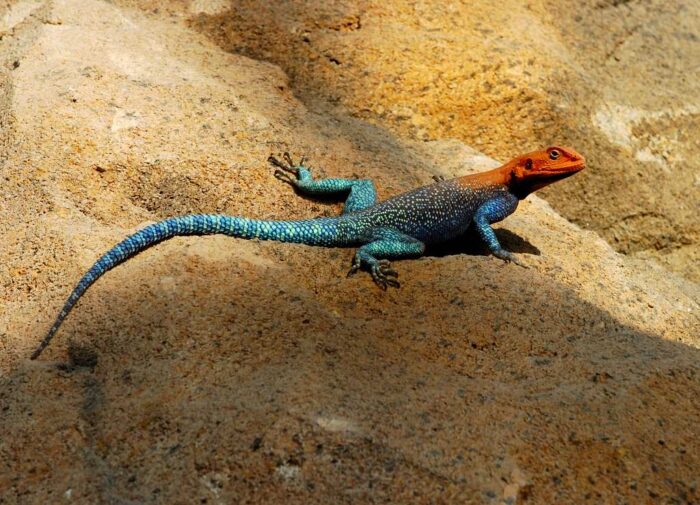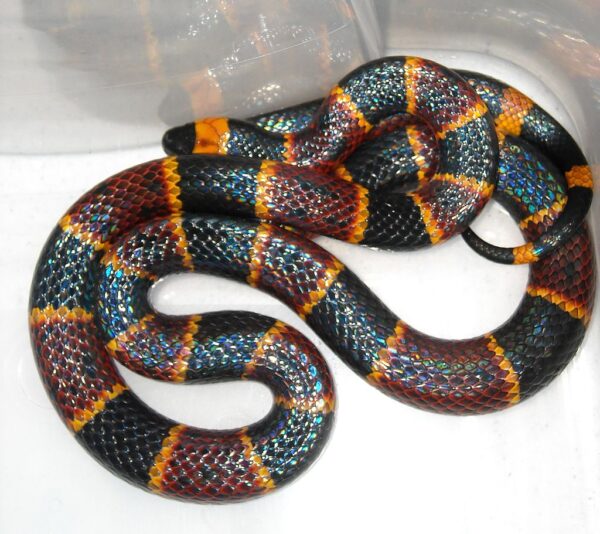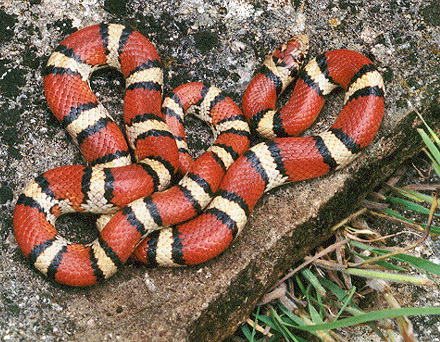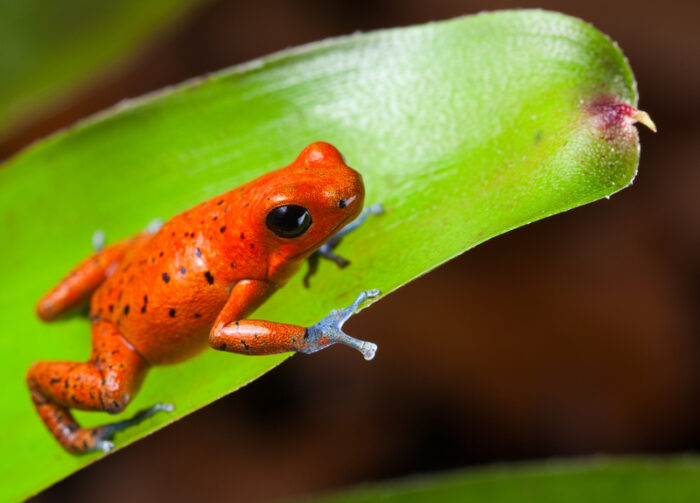From vibrant reds and luminous yellows to warm oranges and brilliant blues, quite a few animals sport jewel-like colours.
We ooh and aah at these displays of eye-catching shades. Nature says "Look at me!" and who are we to argue?
But there is something kind of odd about how the animal world uses these colours. A male cardinal uses its bright red feathers to say "Hey there!" to potential mates. But the strawberry poison dart frog uses the same red to warn potential predators to "Stay away!" (That's because the amphibian is toxic!)
The same colours, but different messages. What gives?
It is a question that some scientists at the University of Arizona have tried to get to the bottom of. Separating the coloured animals into two groups—'come-here' and 'get-lost'—researchers Zachary Emberts and John J. Wiens looked for patterns. After looking at 1,824 land vertebrate animal species (this included birds), they arrived at some illuminating conclusions!
Turns out, whether an animal uses colour as a signal to mates or as a warning comes down to when it is most active: day or night.
Are you a morning animal?
The cardinal is a diurnal bird that uses bright colours. (Getty Embed)
Humans are a diurnal species. This means that we are active during the day. Many animals share this trait, which makes sense. It's a lot easier to see where you're going and find food when it's light outside!
But of course, there are also nocturnal animals, which are active during the evening. The advantages of this lifestyle include the ability to avoid predators and extreme daytime heat.
Biologists have known about these differences for centuries. But according to this study, whether or not an animal is a day creature or a night creature says a lot about how it is uses its colours.
And if you're a brightly-coloured animal that is diurnal, you're likely to belong to the come-here group. The males in your species have colours that stand out to attract females, who are less colourful. Also, the animals in this group tended to be birds and lizards.
Meanwhile, the brightly-coloured noctural animals were almost exclusively get-lost critters. These animals were either venomous (they injected a toxin into others to defend themselves) or poisonous (their bodies contained a toxin that would make a predator sick or dead). And these animals were usually snakes and amphibians.
Why the difference?

Covered in red and blue, the male agama agama might remind you of a poison dart frog, but it is not toxic at all. It uses these colours to attract a mate. The females are mostly brown. (Wikimedia Commons)
In all cases, these colourations would've been passed down through evolution because the animals that had the colours were more successful at surviving than those that didn't. But why did the diurnal animals use come-here colours, while the nocturnal ones were all get-lost? The researchers have a theory.
During the day, a bright colour really stands out. This is an advantage for a male looking for a mate—getting noticed is the entire point! Of course, when you advertise like that, everyone can see you. Including predators. But it seems that this is a risk worth taking for these creatures. Also, after mating, the females are able to hide and more safely and raise their young.
And that's the whole point.
Nighttime warnings

The venomous coral snake has colours that serve as a warning to any predator looking to attack while it sleeps. (Getty Embed)
For nocturnal animals, the bright colour scheme seems to make much less sense. After all, these animals do everything in the dark, including looking for a mate. What's the point of having a distinct marking if no one can see it.
And even more curious? The researchers found that these bright colours have evolved in many species with poor eyesight. Which means the colours aren't meant for each other to see. Or even to be seen when the animals are active.
They are warnings to would-be predators during the day, when the animal is sleeping and can't defend itself.
"Warning colors have evolved even in species with no eyes," said Wiens in their press release. "It's questionable whether most snakes or amphibians can see colors, so their bright colors are generally used for signaling to predators rather than to members of the same species."
Cool!
Similar colours, different uses

This milk snake isn't even venomous. It is a mimic, imitating the markings of venomous snakes. (Getty Embed)
The researchers plan on expanding their research to include more animals. But what they've discovered is already really helpful.
"Animals generally use these colors either as a sexual signal or as a warning signal—rarely both," Wiens noted.
That makes sense. All of these bright colours can send clear signals to others. (The research found that colours like red, orange, and yellow were used pretty evenly as come-here and get-lost colours, while blue colours tended to be more for come-here.)
But because those colours are only useful during the day, these groups of animals use them differently.
Whatever the case, we recommend that you observe any brightly coloured animal in the wild from a safe distance. They are all beautiful, but ultimately humans are better off leaving them be!
 Beautiful but deadly, the strawberry, or red, poison dart frog was one of the species included in the study. (ID 21918871 © Dirk Ercken | Dreamstime.com)
Beautiful but deadly, the strawberry, or red, poison dart frog was one of the species included in the study. (ID 21918871 © Dirk Ercken | Dreamstime.com)









